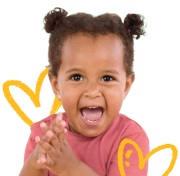 Ever had a massage? Blissful, huh? Your baby would think so too!
Ever had a massage? Blissful, huh? Your baby would think so too!
Mothers all over the world have been massaging their babies for centuries. It may seem like a new fad, but really it is an age-old tradition in many cultures. Baby massage is a fun, inexpensive, and simple way to bond with your baby, and more and more studies are showing the innumerable benefits of baby massage!
Research has shown that babies who are massaged tend to cry less and sleep better. Baby massage can help with colic and constipation, and massage increases circulation and stimulates digestion.
A University of Miami study, involving babies born prematurely, showed that massaged infants gained 47% more weight than unmassaged infants, and all the babies were fed the same number of calories. Studies also show that a 5-minute massage enhances the performance of babies on tasks requiring their attentiveness.
Baby massage is a therapeutic way to nurture your baby’s psychological, physiological, and cognitive development. Infant massage is also believed to promote emotional security and foster healthy self-esteem.
When getting started, many mothers choose to take an infant massage class, which usually meets once a week for 4-5 weeks. While this might be helpful, it isn’t necessary. There are also books and DVD’s to teach you the baby massage ropes, but these too, you might find extraneous. In reality, you can follow your mommy instinct.
Just be sure to use gentle strokes, with minimal pressure. Keep at least one hand on your baby for the entire massage, so that she’ll know where you are, and nothing will startle her. Practice small circles, or long feathery sweeps. A baby massage can last from 5 minutes to 30 minutes. Just make sure that when you are massaging your baby, you give her your complete attention. Turn off the TV and the cell phone. You can turn on some soft music, or you can make up a silly song about rubbing your baby’s belly.
You can massage your baby on the bed, or on a towel on the floor. I prefer the towel on the floor, as it is a soft surface, and I can let my baby be naked. (If there’s an accident, it’s no big deal on the floor!) I wonder how annoying a diaper gets after a hundred hours, so I imagine that my son enjoys some “free time” on the floor. On colder days, I keep him covered up with part of the towel, while I massage one area at a time.
You can start a baby massage on your baby’s head, and work your way down her face, her neck, chest, belly, legs and feet. You can then roll your baby over and massage his back and the backs of his legs. It is healthy to give your baby time on her belly, and many of us forget to do it often, so this is a good chance!
Don’t neglect the feet and ears! According to the principles of reflexology, rubbing your baby’s feet can have positive effects on every part of his body! And Chinese medicine teaches us that there are over 40 acupoints in an ear!
You don’t need any fancy oils or lotions, though some moms like to use them. You can make your own oil by adding a few drops of lavender oil to grapeseed oil. Or you can use something as simple as olive oil.
The hustle and bustle of early motherhood is so overwhelming, sometimes we forget to simply bond with our baby, and tell her (or in this case, show her!) that we love her! Massaging your baby can help you slow down and enjoy her for a little while. It’s a beautiful thing for both of you!
 Okay moms, do you remember those early months of pregnancy? Before your babies starting throwing champion punches in utero, you probably went through a stage of wondering whether or not you were feeling the baby’s movement. I remember feeling a fluttery sensation and wondering whether I was feeling my daughter’s first movements or just had indigestion.
Okay moms, do you remember those early months of pregnancy? Before your babies starting throwing champion punches in utero, you probably went through a stage of wondering whether or not you were feeling the baby’s movement. I remember feeling a fluttery sensation and wondering whether I was feeling my daughter’s first movements or just had indigestion. 






